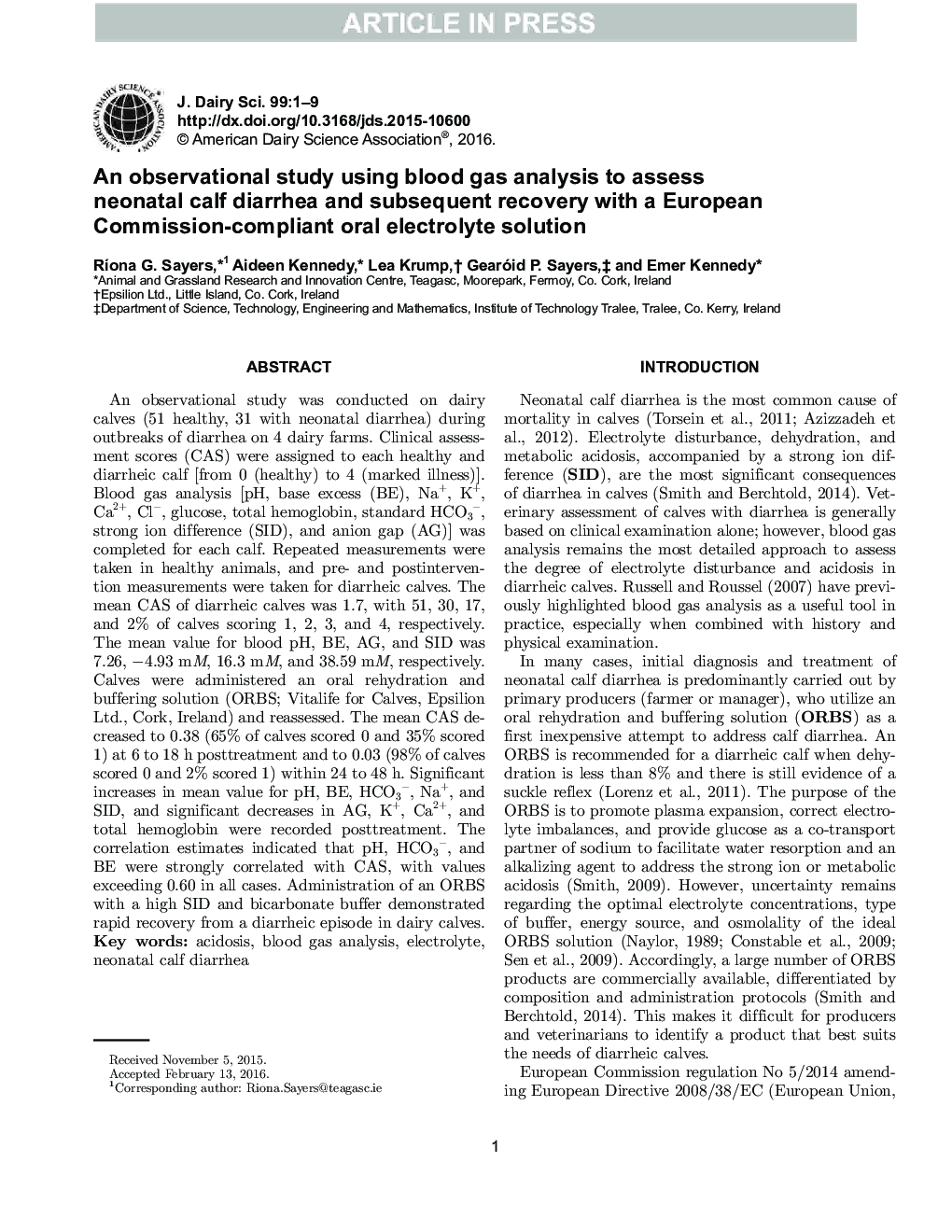| Article ID | Journal | Published Year | Pages | File Type |
|---|---|---|---|---|
| 10973328 | Journal of Dairy Science | 2016 | 9 Pages |
Abstract
An observational study was conducted on dairy calves (51 healthy, 31 with neonatal diarrhea) during outbreaks of diarrhea on 4 dairy farms. Clinical assessment scores (CAS) were assigned to each healthy and diarrheic calf [from 0 (healthy) to 4 (marked illness)]. Blood gas analysis [pH, base excess (BE), Na+, K+, Ca2+, Clâ, glucose, total hemoglobin, standard HCO3â, strong ion difference (SID), and anion gap (AG)] was completed for each calf. Repeated measurements were taken in healthy animals, and pre- and postintervention measurements were taken for diarrheic calves. The mean CAS of diarrheic calves was 1.7, with 51, 30, 17, and 2% of calves scoring 1, 2, 3, and 4, respectively. The mean value for blood pH, BE, AG, and SID was 7.26, â4.93Â mM, 16.3Â mM, and 38.59Â mM, respectively. Calves were administered an oral rehydration and buffering solution (ORBS; Vitalife for Calves, Epsilion Ltd., Cork, Ireland) and reassessed. The mean CAS decreased to 0.38 (65% of calves scored 0 and 35% scored 1) at 6 to 18Â h posttreatment and to 0.03 (98% of calves scored 0 and 2% scored 1) within 24 to 48Â h. Significant increases in mean value for pH, BE, HCO3â, Na+, and SID, and significant decreases in AG, K+, Ca2+, and total hemoglobin were recorded posttreatment. The correlation estimates indicated that pH, HCO3â, and BE were strongly correlated with CAS, with values exceeding 0.60 in all cases. Administration of an ORBS with a high SID and bicarbonate buffer demonstrated rapid recovery from a diarrheic episode in dairy calves.
Related Topics
Life Sciences
Agricultural and Biological Sciences
Animal Science and Zoology
Authors
RÃona G. Sayers, Aideen Kennedy, Lea Krump, Gearóid P. Sayers, Emer Kennedy,
